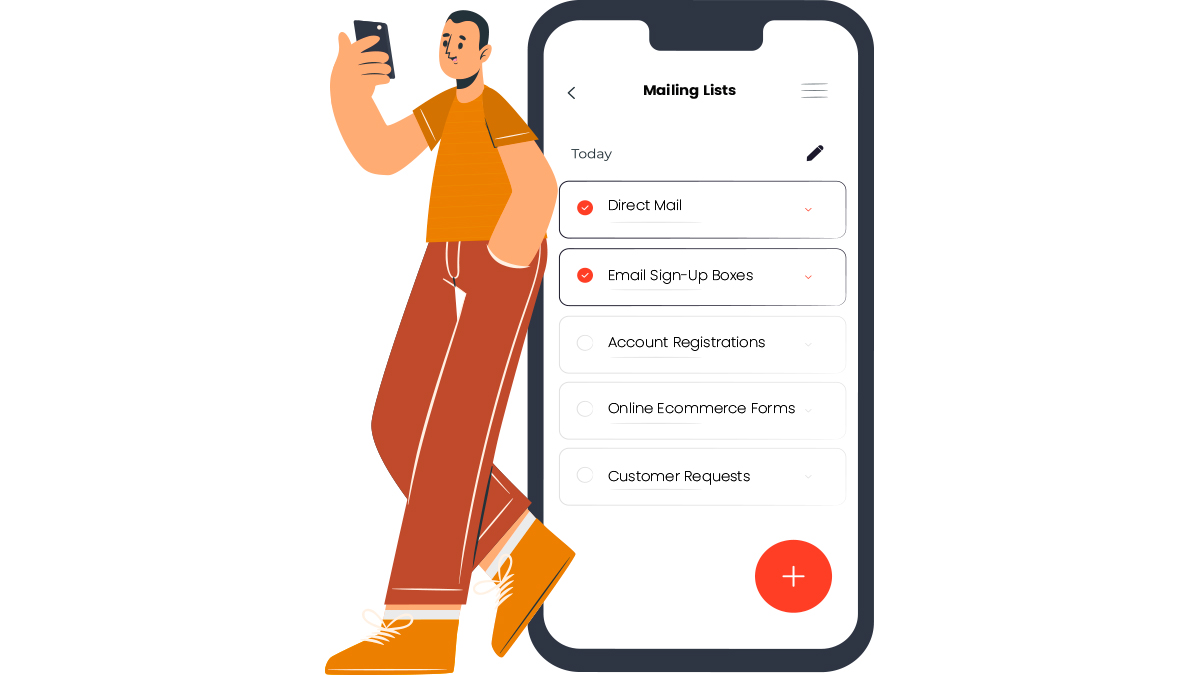
Lead generation has been given paramount importance in B2B marketing. The main concern of most marketers is to reach wider audiences and generate new leads. Because of this, many marketers have lost track of what is really important. While lead generation is the foundation of modern marketing, it is merely the first step in the long process that we call conversion. A successful conversion starts with proper management of your business mailing lists & sales leads, and this is where many marketers go wrong.
Don’t underestimate the importance of research
The possibility to research purchasing decisions online has empowered modern customers with a lot of information. This has caused a shift in power in marketing. If modern marketers want to take back the power, they too must gather information on the customers. After all, information is power and any data that you have on a potential lead can make the difference between a conversion and a waste of time. This is why at PeaksLead, we don’t just offer you a list of names and contact information. On the contrary, we strive to provide you with highly detailed business leads, to ensure the success of your outreach strategy.
Make the most of your lead data with a good CRM
Many small and medium-sized businesses still use spreadsheets to store customer data. However, spreadsheets can get lost and they don’t allow you to properly process your lead data as a CRM does. Nonetheless, finding the right CRM can be tricky, so don’t rush this decision.
Nobody makes the wrong decision for his business on purpose. It is due to a lack of adequate knowledge that businesses fail to simplify processes, resulting in costly CRM implementations, hence, leading to failure. To help you cope with this pressing issue, we have put together the 10 essential steps involved in picking the right CRM solution for your business. These steps are:
- Define Your Business and Functional Requirements
- Get Everyone on Board
- Evaluate the Options
- On the Basis of Evaluation Results, Pick the Right CRM Software
- Make a List of CRM Vendors, Offering Your Preferred Product
- Evaluate CRM Vendor Through Its Presentation and Demonstration
- Question the Vendor About the Customization/Integration Capabilities
- Ask All Possible Questions and Clarify Every Ambiguity
- Discuss Optimal Purchase Scenario and Favorable Terms Involved
- Make Your Purchase Decision
Embrace a lead nurturing strategy
The concept of lead nurturing is still difficult to grasp for many marketers. According to a recent study performed by Bizo and Oracle Marketing Cloud, for most marketers, the e-mail open rates don’t exceed 20%.
So, how much effort are you putting into optimizing your marketing strategies? Are you segmenting your sales leads or are you treating all your leads the same? Are you tailoring the sales pitch for each individual lead or are you sending out standard sales scripts?
First of all, a successful lead nurturing strategy requires a lot of information. Record the results of each interaction that you have with a customer. You will use this information to craft customized email scripts and nurture your leads until they are ready to buy. It will also help you analyze consumer behaviors at a wider scale, and develop strategies to optimize your outreach efforts. Marketing automation programs are the first step towards building a good lead nurturing strategy.
Don’t spam your email leads! Instead, monitor their satisfaction
The last thing that anyone wants is to be spammed with countless irrelevant emails. When it comes to email marketing, you need to use a good marketing automation program that offers comprehensive e-mail metrics such as opened emails, links clicked, email conversions, subscription rate, un-subscription rate, bounced emails, and temporal statistics. Use these metrics to keep your leads satisfied and optimize your e-mail marketing strategy. Moreover, offer your mailing list the opportunity to unsubscribe, but also to reduce or increase the number of received emails.
Keep your business mailing lists & sales leads fresh
Keeping your business mail lists fresh is a great way to measure the effectiveness of your e-mail campaigns. To do this, you simply create an opt-in message through which you encourage your contacts to reconfirm their subscription if they are still interested in your services. A smaller list can seem counterproductive, but if you put more effort into creating customized content for the leads that are really interested in your services, you will surely increase the efficiency of your marketing efforts.
Get in the driver’s seat and Connect with potential customers with PeaksLead.






Follow Us On